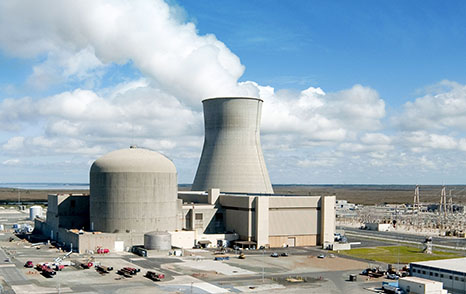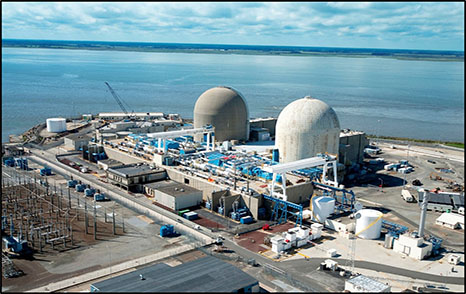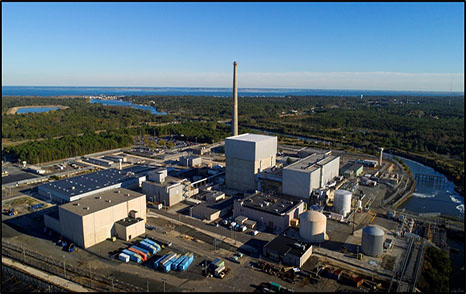Nuclear Generating Stations
A nuclear generating station operates on the same principle as a conventional fossil-fueled (oil, natural gas or coal) generating station, except that the heat generation is provided by nuclear fission rather than combustion. The heat liberated in either process (fission or the combustion of fossil fuel) is used to convert water into steam. The steam enters a turbine which is connected to a generator that produces electric current for commercial distribution.
There are two commercial reactor technologies used in the United States for producing electricity for commercial consumption: Pressurized Water Reactors (PWR) and Boiling Water Reactors (BWR). Although each technology uses the nuclear fission process to produce heat, the steam flow to the turbine is different. In a PWR, the steam is produced in an intermediate heat exchanger called a steam generator (PWR flow schematic). The steam entering the turbine is therefore not radioactive. In a BWR, the steam is produced directly in the reactor (BWR flow schematic) and is slightly radioactive when it enters the turbine.
New Jersey has two operating nuclear generating stations: Salem (Units 1 & 2) (PWR) and Hope Creek (BWR). New Jersey also has a permanently shutdown nuclear generating station that is presently in the decommissioning process: Oyster Creek (BWR). Click on the tiles above for information pertaining to each station.

Hope Creek
Hope Creek Generating Station utilizes boiling water reactor technology to produce steam used as the motive force to generate electricity. The station is located on the northern half of Artificial Island in Alloways Creek Township in Salem County.

Salem Units 1 & 2
Salem Generating Station (Units 1 & 2) is comprised of two units that utilize pressurized water reactor technology to produce steam used as the motive force to produce electricity. The station is located on the southern half of Artificial Island in Alloways Creek Township in Salem County.

Oyster Creek
Oyster Creek Nuclear Generating Station, located in Lacey Township in Ocean County, is permanently shutdown. During its operation from 1969 until 2018, Oyster Creek utilized boiling water reactor technology to produce steam used as the motive force to generate electricity. Oyster Creek had a rated output of approximately 625 megawatts of electricity.
 OFFICIAL SITE OF THE STATE OF NEW JERSEY
OFFICIAL SITE OF THE STATE OF NEW JERSEY